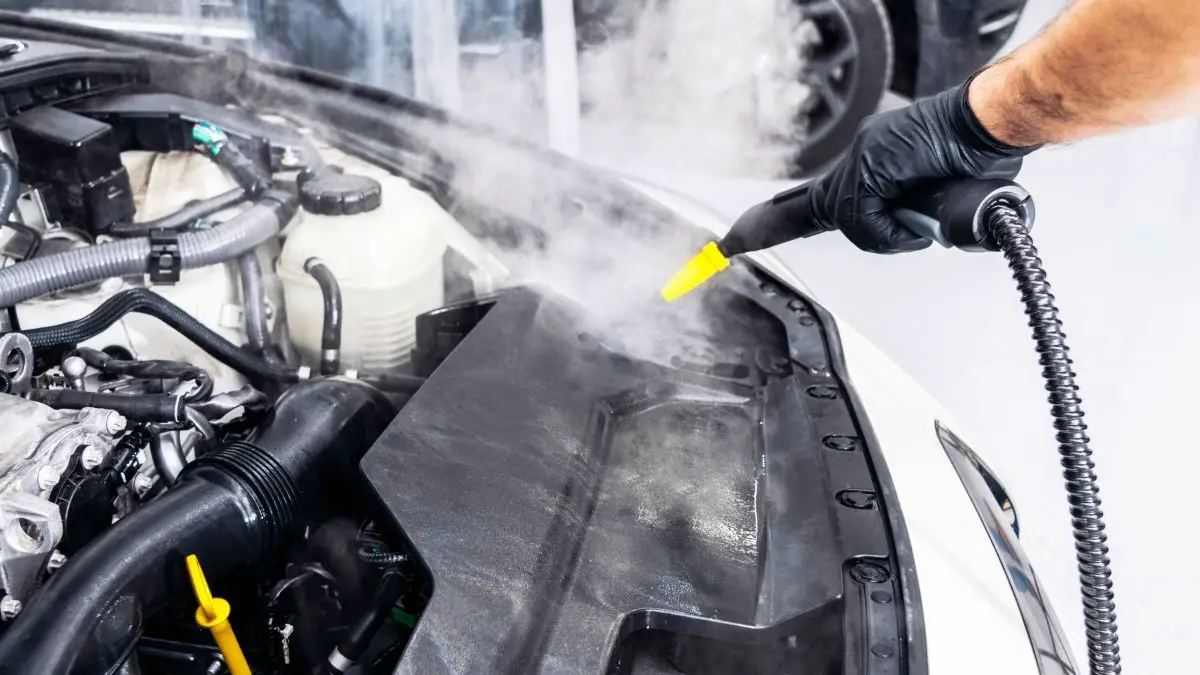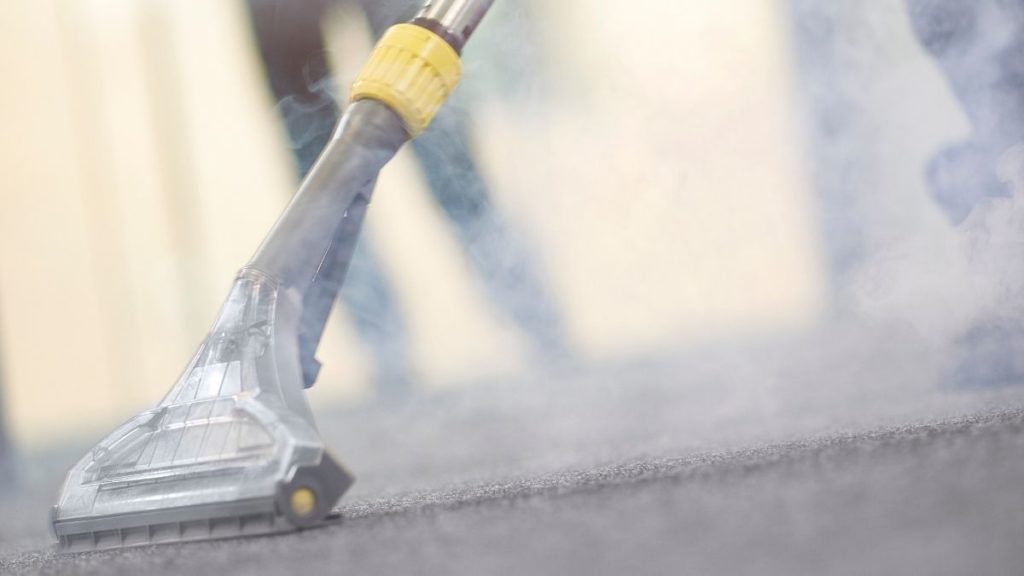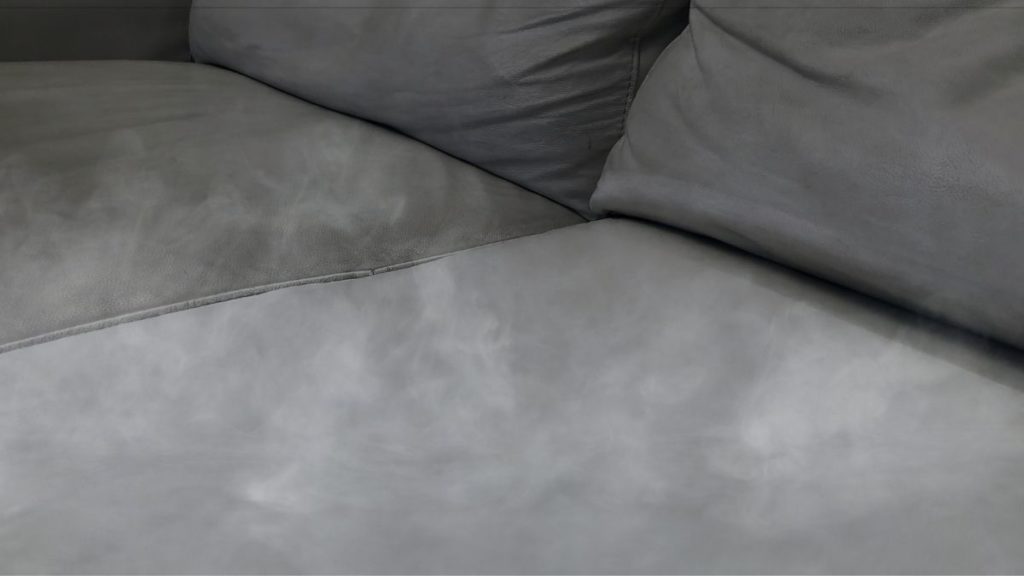Engine Steam Cleaning — A Guide For Beginners
*As an Amazon Associate we earn from qualifying purchases. The price to you remains the same.
There is a lot of debate about whether steam cleaning of engines is good or bad.
We would say, as the owner of the vehicle, the choice is entirely yours.
The fact of the matter is, cleaning the engine block and internals periodically is a good idea. But steam cleaning the engine internals isn’t an easy task. The process needs extreme care and precision.
If done properly, the process of engine steam cleaning has quite a few major benefits that you can’t overlook.
But don’t just take my word for it.
Take a look at the various facts and decide.
What is Engine Steam Cleaning?
Table of Contents
Steam cleaning the inside and out of a car including the engine block has become a popular choice. When done right, the process gives the vehicle a brand-new appearance. In fact, cleaning the engine bay with steam and a high-quality degreaser can effectively clear away the oil and grease.
That means fewer chances of the air filter getting clogged and reduced fire hazards. Even so, the biggest payback of the process is cosmetic enhancement.
But cleaning the engine internals will actually give your engine a performance boost. And it’s a completely different ball game.
How so?
The method involves opening the engine block, disassembling the components, and using a precision steam cleaner to clean up the gunk and grime. Additional degreasing chemicals are used if necessary.
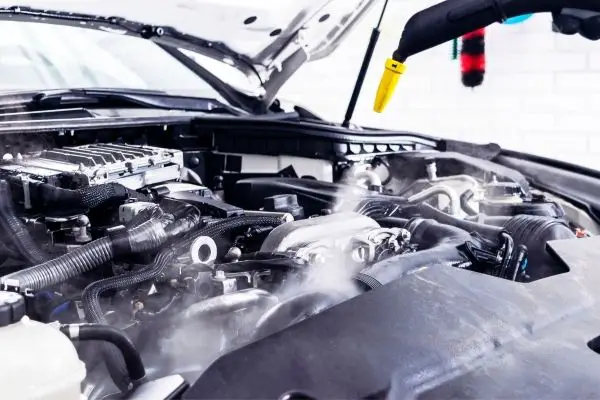
For sure the process needs thorough knowledge about the engine internals, including the electrical engine controls and the ignition system. Any damage to the setup can lead to engine malfunctioning.
In other words, you need a certified technician who knows the engine inside out.
Do You Need to Steam Clean the Car Engine?
The simple answer is, YES.
The primary reason is carbon deposits. You may think wear and tear is a major issue that can affect engines in the long run. But in most cases, carbon deposits are the real bad guys.
Allow me to add a little more drama—it’s an evil that you can’t see.
Have you ever seen the blank gunk covering the spark plugs or the piston heads in an older engine?
That’s what I am talking about.
Consider a modern engine with direct fuel injection sprays. It sprays gasoline at high pressure directly in the combustion chamber. But some oil may seep past the seals and run beyond the intake valves.
The super-hot exhaust gas exiting through the exhaust valve can burn up this oil. And the result is the formation of microscopic carbon particles that stick to the metal.
Experts say that these deposits can form at a fast rate, even within 20,000 to 25,000 miles. Despite the use of premium grades of fuel that have cleaning additives, the problem can’t be fully eliminated.
Here’s the scary part…
The cylinder and the piston in the chamber are designed with high levels of precision. So, the gradual accumulation of matter in the chamber will start affecting the performance. This can reduce the pressure during the power stroke and reduce combustion efficiency.
Take a closer look and you will find that the ill effects aren’t limited to that.
- Carbon deposits can block the fuel injector nozzle holes and restrict fuel delivery. Quite often, the deposits can also soak up the fuel coming in from the injectors. This affects the ratio of air and fuel and the engine may run lean. The results are lean misfires, reduction in fuel economy, and increased emissions. The chances of preignition also increase.
- When deposits form on the air intake valve, the airflow to the engine chamber is reduced. This also affects the fuel mixture and reduces performance. The deposits can even prevent the valves from closing properly. And that means the combustion chamber isn’t fully sealed!
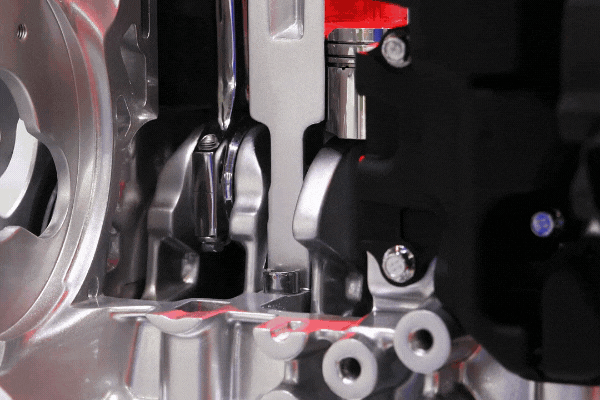
- With time, these deposits can form hot spots inside the combustion chamber. As a result, the fuel might ignite before the firing of the spark plug. This causes a sharp rise in pressure that can damage the engine. Another side effect is unwanted vibrations.
- The build-up of deposits inside the combustion chamber and over the top surface of the pistons increases the engine compression ratio. That demands fuel with a higher octane rating. Otherwise, detonation can occur in the chamber. If that happens frequently, components like the head gasket, rod bearings, and piston rings will get damaged.
But that’s not all…
There’s also the issue of oil sludge deposition. This is due to the oxidation or contamination of the engine oil. A regular oil change or using specially formulated oils can reduce this problem, but can’t eliminate it completely.
The sticky oil sludge prevents the lubricating oil from collecting the heat and can be dangerous for the engine’s health.
Next, add external elements like dirt, dust, pollen, etc. that can find their way into the oil. Now, you have a whole army of muck-forming evil acting against the engine.
Pros and Cons of Steam Cleaning the Vehicle Engine
First, let’s take a look at the pros.
- Cleaning the engine body and internals with steam will remove the deposits and help the engine to perform better. An in-and-out cleaning will improve fuel efficiency and reduce emissions.
- Removal of the oil sludge will help the lubricating oil to function properly. This will prevent the engine from overheating.
- When the engine is clean both inside and outside, it’s easier to point out other faults like cracks or leaks.
- The reduction of the buildup of combustible materials around the engine block reduces potential fire hazards.
- A vehicle with a clean engine will attract a higher resale value.
Honestly, there are no specific cons of steam cleaning a greasy engine if it’s done in a safe manner.
However, there are various sensitive engine components that may start malfunctioning if they aren’t cleaned carefully. Since a single wrong burst of steam can cause damage, the process requires precision. That’s why many owners prefer cleaning the engine internals by chemical treatment.
DIY engine steam cleaning is a good option when it comes to the engine compartment. But when it comes to cleaning the internals, that isn’t a good idea.
We suggest that you take the help of a qualified stem cleaning technician to handle the process.
Frequently Asked Questions
How much does engine steam cleaning cost?
The cost will depend on the size of the engine and its current condition. An external cleaning job can cost anywhere between $100 to $400. If you want the engine internals cleaned from deposits, the costs could be as high as $1500.
Can steam cleaning damage the engine?
When done in the wrong manner, steam cleaning can damage the sensitive components in a modern engine. We suggest that you get it done by a qualified technician to prevent any damage.
Is steam cleaning safe for cars?
When done in the right manner, steam cleaning the engine compartments and internals will make your car safer without harming the engine.

